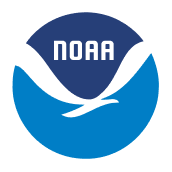GSL offers new storm surge alert tool

The deadliest hazard from tropical storms and hurricanes isn’t wind – it’s storm surge and the flooding that follows. That’s why NOAA Research is developing a new tool to more effectively communicate the timing, extent and magnitude of storm surge during hurricanes and tropical systems.
Hazard Services is a multi-threat warning software system developed by NOAA’s Global Systems Laboratory to issue severe weather alerts for hazardous weather conditions including severe thunderstorms and tornadoes, flooding, blowing dust, heat, wind and winter weather events.
Starting this summer, a new element of Hazard Services will be tested in the field to communicate the risk of life-threatening storm surge. It’s one of a host of advancements to hurricane forecasting and warning capabilities developed by NOAA Research.
The entire U.S. East and Gulf coasts are vulnerable to storm surge flooding, which occurs when water is pushed ashore over and above the normal astronomical tide, most often due to strong, onshore winds of a hurricane or tropical storm. It affects not only the immediate coast, but can also reach inland along rivers and canals. In the past 50 years, nearly 50% of all deaths associated with tropical cyclones were from storm surge in the U.S.

Storm surge watches and warnings, issued by NOAA’s National Hurricane Center, are geographically-based alerts issued to the public in areas at risk from life-threatening surge. A storm surge warning means that there is a danger of life-threatening inundation from rising water moving inland from the shoreline somewhere within the specified area, generally within 36 hours. A storm surge watch means that inundation is possible generally within 48 hours.
Storm surge watches and warnings are currently broadcast using designated alerting zones, which may extend well beyond the area actually at risk for coastal flooding. Hazard Services, however, would offer forecasters the opportunity to communicate storm surge watches and warnings with more geographical precision and more detailed warning messages. This would ultimately reduce overwarning areas and people who are not in danger of life-threatening storm surge.
Hazard Services also introduces the capability to issue storm surge warnings that can be closely aligned with evacuation and wireless emergency alerting zone boundaries, supporting decision making for state and local emergency management officials. This is another way that forecasters can ensure that those under a direct threat of storm surge receive the most accurate warnings possible, while those outside of the risk area are not unnecessarily alerted.

Since the initiation of the project in 2018, GSL has been developing new watch/warning/advisory capabilities for over 50 different long-duration winter weather, non-precipitation hazards, marine and aviation hazards.
Non-precipitation threats include extreme heat or cold, dense fog and smoke, high winds and volcanic ashfall: events that can last for hours or even days and can affect vulnerable populations that do not have access to a safe, sturdy, and climate-controlled shelter.
Under development are applications for marine threats, which include severe winds, freezing sea spray, rough seas, and low visibility that can damage sea-faring vessels, as well as in-flight aviation hazards such as turbulence, wind shear and icing.
GSL’s Hazard Services project lead Nate Hardin said Hazard Services represents the next generation in warning alerts. “It’s grown from a concept to a critical piece of software that’s used daily across our country to fulfill NOAA’s mission of saving lives, protecting property, and supporting our national economy.”
This story was originally published by NOAA Research.
Our Mission
Lead research and directed development through the transition of environmental data, models, products, tools, and services to support commerce, protect life and property, and promote a scientifically literate public.
Research Areas
Organizational Excellence, Earth System Prediction, Advanced Technologies, and Decision Support are the foundation to achieving the GSL Grand Challenge: Deliver actionable global storm-scale prediction and environmental information through advanced technologies to serve society.
Global Systems Laboratory

